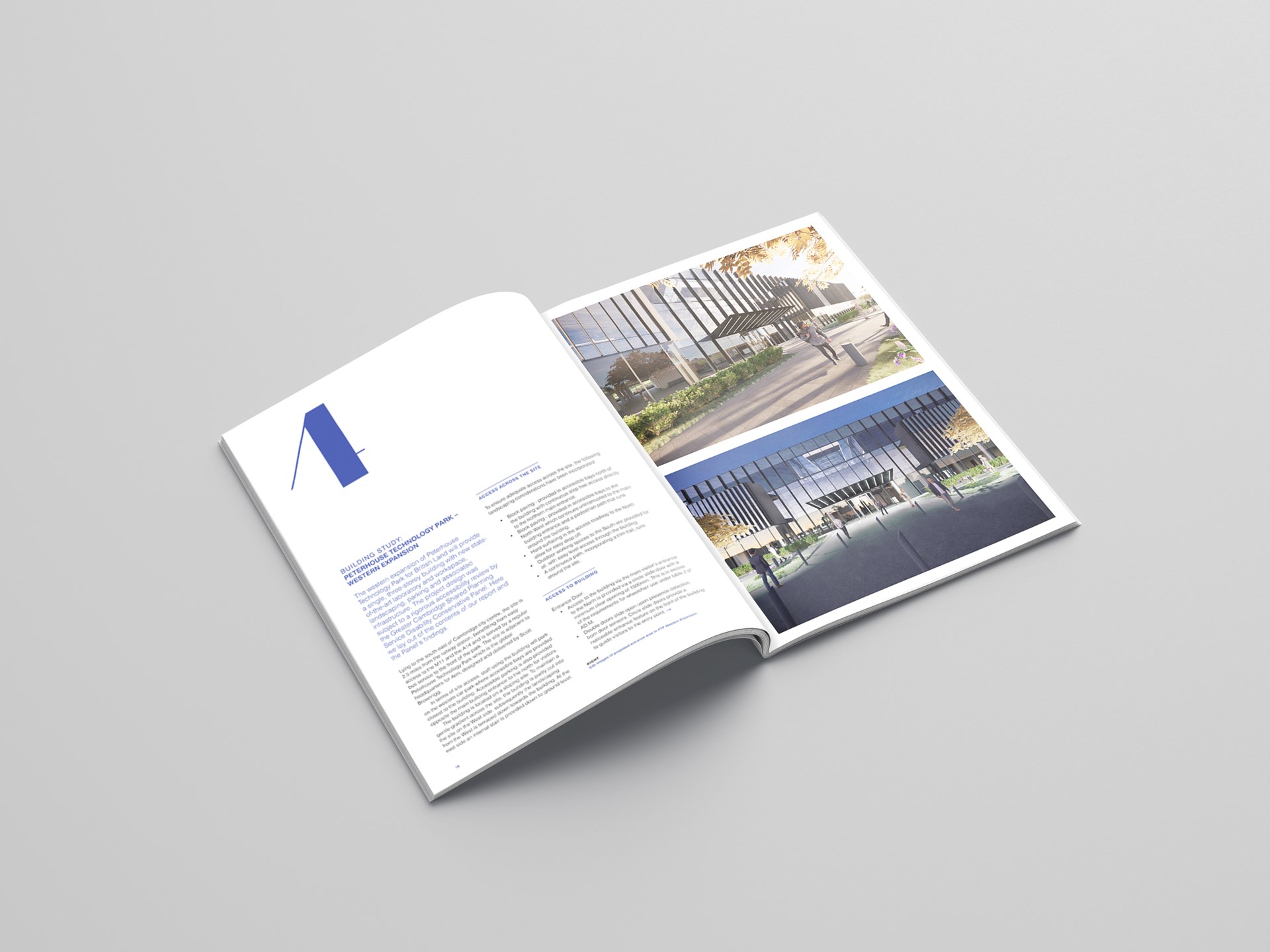Building Study: Peterhouse Technology Park - Western Expansion



The western expansion of Peterhouse Technology Park for British Land will provide a single, three-storey building with new state-of-the-art laboratory and workspace, landscaping, parking and associated infrastructure. The project design was subject to a rigorous accessibility review by the Greater Cambridge Shared Planning Service Disability Conservative Panel. Here we lay out of the contents of our report and the Panel’s findings.
Lying to the south east of Cambridge city centre, the site is 2.5 miles from the railway station, benefitting from easy access to the M11 and the A14 and is served by a regular bus service to the front of the park. The site is adjacent to Peterhouse Technology Park which is the global headquarters for Arm, designed and delivered by Scott Brownrigg. In terms of site access, staff using the building will park on the western car park where accessible bays are provided closest to the building. Accessible parking is also provided opposite the main building entrance to the north for visitors. The building is located on a sloping site. To maintain a gentle gradient across the site, the building is partly cut into the site on the West side, subsequently the landscaping from the West is terraced down towards the building. At the east side an internal stair is provided down to ground level.

To ensure adequate access across the site, the following landscaping considerations have been incorporated:
Entrance Door:

Feature Stair:

Lifts:
Service Core:
The cores are accessed via doors with suitable eye level vision screens, providing minimum 900mm clear opening. There is a clearance of 300mm from leading edge of the door to the wall return (in compliance with provisions set out under 3.10 of AD.M).

Escape Stairways:
Terrace Access:
Manifestation:
General Items:

The Panel noted that they’d like to see sliding (pocket) doors on the accessible WCs as these are easier to manoeuvre from a wheelchair. On the ground floor core, which is accessible to visitors, they recommended including a Changing Places cubicle. These are increasingly becoming a feature in places of work and public buildings and are included within BS8300. The upgrade required from the proposed shower rooms would be minimal and yet it would significantly improve the building’s access credentials. The team have taken the decision to incorporate this facility to every level.
In conclusion the Panels said: “This is a very well thought out scheme with an impressive variety of access features proposed. The constraints regarding the gas main and level change that will impact options on entering the building are noted, but the Panel are generally very supportive.”